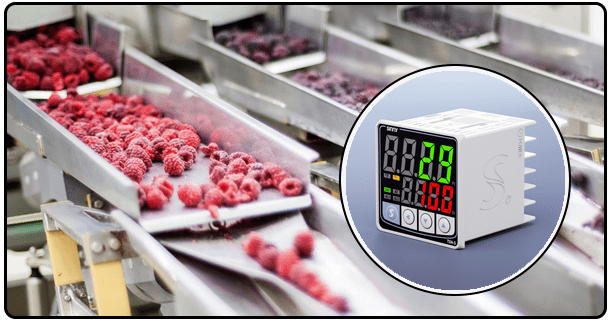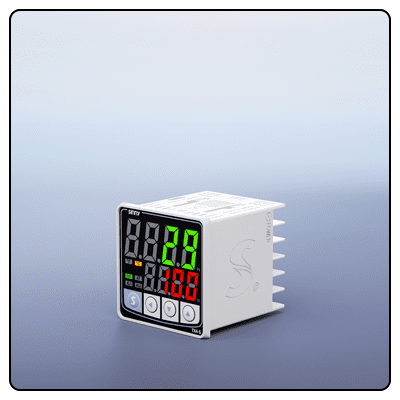What Are Common Issues With Temperature Controllers?
Explore the most frequently occurring problems associated with temperature controllers - from inaccurate readings and system errors to discovering effective troubleshooting techniques - so as to achieve maximum performance from them.
Temperature controllers play an essential part in various industrial and commercial processes, ensuring processes operate at desired temperatures. Unfortunately, like any sophisticated equipment, they may encounter issues that affect performance; knowing some common problems associated with temperature controllers will allow quicker troubleshooting and efficient operational management. This article will outline several of these common problems along with their causes and possible solutions.
1. Inaccurate Temperature Readings
Temperature controllers pose several serious concerns, chief among them inaccurate temperature readings due to outside influences like weather fluctuations. Such inaccurate readings could result from different causes including:
* Sensor Malfunction: Sensors which malfunction can send inaccurate readings back to their controller and result in incorrect measurements being recorded by them.
* Selecting Inappropriate Sensor Type: Selecting an incorrect sensor type could result in inaccurate readings from your controller, leading to false positives or readings that don't correspond with reality..
* Insufficient Calibration: With proper calibration, temperature controllers may accurately depict actual temperatures.
* Solutions: Regularly inspect sensor integrity, utilize only suitable sensor types and calibrate controller according to manufacturer recommendations.
2. Temperature Fluctuations
Fluctuations present significant challenges when working in processes requiring stable environments, like when temperature levels fluctuate unexpectedly.
* Incorrect Control Parameter Settings: Inappropriately configured control parameters may cause temperature oscillation.
* Environmental Factors: External temperature changes or drafts can disrupt sensor readings.
* Power Supply Issues: Fluctuations can have an adverse impact on a controller's ability to maintain stable temperatures, hindering its effectiveness as an effective temperature regulator.
* Solutions: Verify control settings, shield sensors from environmental changes, and ensure a steady power source.
3. Control Module Not Powering On
A controller that fails to power on can put operations on hold: this could potentially put at risk the ability to continue in its usual fashion.
* Power Supply Interruptions: Power supply disruptions may prevent your controller from switching on properly, rendering its contents useless to use and stopping its ability to do its work.
* Failure of Equipment: Faulty internal component failure can also contribute to power-up problems.
* Solutions: When testing power connections or circuit breakers, inspect them closely for signs of damage; examine any controller for signs of malfunction and any indications of physical wear and tear.
4. Failing to Reach Desired Temperature
Sometimes, a thermostat struggles to achieve the set temperature:
* Inappropriate Sensor Placement: If the sensor is placed properly, it may be able to register process temperature fluctuations accurately.
* Controller Malfunction: Internal errors or malfunctions may interfere with a controller's functionality and reduce its effectiveness.
* Incorrect Settings: If incorrect setpoint or control parameters are entered into a controller's programming interface, it could cause it not to achieve the desired temperature regulation.
* Solutions: For optimal sensor placement and proper operation of controller errors to verify settings accuracy.
Error Messages and Alarms
* System Errors: These errors could signal anything from sensor faults to communications misfires, among other issues.
* Component Failures: Various error codes can alert users to failures of certain components.
* Configuration Issues: Improperly configured settings can trigger alarms as well.
* Solutions: Please consult the controller's user manual to interpret error codes and take corrective actions.
Unresponsive Controls
Can be Frustrating A controller that fails to respond to user input can be highly frustrating: it simply does not follow commands properly or respond properly when inputted by users.
* UX/UI Issues: Display or button issues can prevent input recognition.
* Software Glitches: Temporary software issues may temporarily render certain websites or apps nonresponsive and cause unavailability issues.
* Hardware Failures: Compounding this difficulty are more serious hardware problems that lead to decreased responsiveness.
* Solutions: Restart the controller if experiencing temporary glitches and inspect the user interface for faults.
Output Failure
Faulty controllers cannot activate heating and cooling elements properly, creating a serious threat: this poses one of the primary concerns with modern HVAC technology.
* Relay or Solid State Relay Failure: In the event that a relay or solid-state relay fails, its signal cannot reach its destination, thus pr its delivery by the controller.
* Improper Wiring: Incorrect wiring errors may thwart the controller from providing its output as intended.
* Load Issues: Complications with load devices can also contribute to output failures.
* Solutions: Check all wiring, output devices, and relays for functional integrity.
5. Electrical Noise and Interference
Electrical interference and noise can result in temperature controllers performing inconsistently:
* Improper Wiring: Improper wiring may pick up interference due to being inadequately shielded and can create interference issues.
* Electromagnetic Interference: Nearby equipment may produce electromagnetic fields that interfere with your controller.
* Solutions: Shielded cables should be utilized, and temperature controllers should be kept away from sources of electromagnetic interference for best performance.























